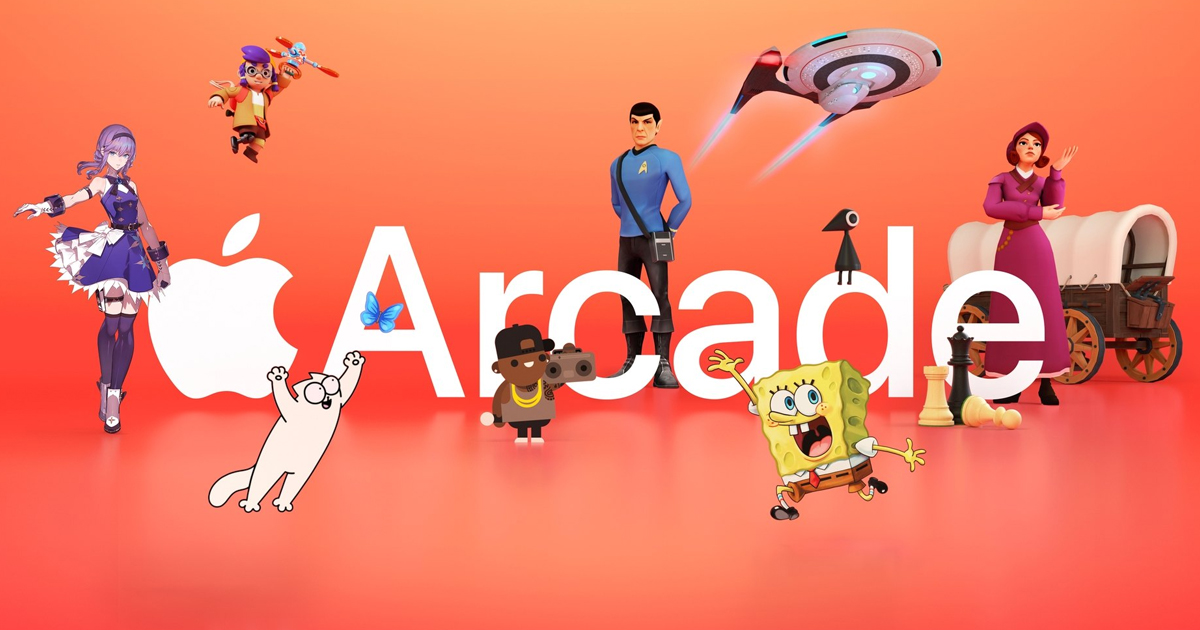This year Apple has made a soft relaunch of Apple Arcade. In an attempt to attract a new audience, the company has added many already successful casual iOS titles to the library. Gaming expert Simon Carless has figured out the reasons for the change of strategy and Apple’s unwillingness to finance risky exclusives.In the latest issue of his newsletter, Carless published a table of the 22 most popular titles in Apple Arcade at the moment.
Popularity in this case was measured by the number of new reviews in the American App Store from August to September. The table also shows the average scores for all titles. As Carless notes, the more new reviews a certain project has, the higher its final score is usually.
Interestingly, about a third of the games in the list — or rather, seven — are included in the updated library of the service, which Apple introduced in April. These are projects from the new categories “Classic Games” and “Best of the App Store”, which have been added to the exclusive games from Arcade Originals.
The new categories feature special versions of already existing premium or free-to—play iOS titles – only without ads, with monetization disabled and fully unlocked content. Apple itself marks such games with a “+” icon, so as not to confuse them with the original versions from the App Store: SongPop Party+, Checkers Royal+, etc.
Carless has no exact data on downloads of titles from Apple Arcade. However, he notes that the popularity of a particular game can be said if it receives from 300 new reviews per month.
The most popular games in Apple Arcade according to new reviews from August to September 2021What conclusions can be drawn from this table?
Apple Arcade can’t compete with consoles.
- Initially, the company tried to focus on exclusive titles that can be played both on mobile devices and using gamepads. However, this approach did not justify itself.Carless estimates that 95% of the game time and user reviews in Apple Arcade are on iOS devices, while only 1-2% of the audience plays on tvOS and macOS.
As a result, the company decided to focus only on games that use the capabilities of the touchscreen.Critically acclaimed indie games don’t become hits.
- At the start, the Apple Arcade library consisted mainly of high-quality and beautiful indie titles. These were plot-oriented linear projects that lacked replayability.Examples include The Last Campfire and Little Orpheus.
Carless notes that the main problem was that they were designed for a niche audience and did not contribute to the growth of the user base. That’s why Apple decided to bet on already proven hits and franchises like Kingdom Rush and Reigns.Little Orpheus
Apple One subscription will change the audience of the service.
- Initially, it was difficult for Apple to determine the target audience of Apple Arcade, since it focused mainly on fans of core titles. Now the company has shifted its focus to the mass market, attracting more casual gamers.To do this, Apple has added Arcade to each Apple One subscription level.
Thus, mass users who, for example, just wanted to buy a set of Apple Music, iCloud and TV+ get access to the service. In particular, classic casual titles are now available for them in Arcade.Apple doesn’t want to take any more risks.
- The company is now offering money to already successful IP instead of funding niche experimental titles. At the same time, Apple periodically draws attention to projects that failed at the softlonch stage.Of the latest examples of “saved” titles, we can recall Lego Star Wars Battles and Castlevania: Grimoire of Souls, which as a result got off to a good start in Arcade.
According to Carless, this is a fairly simple way to attract developers to the subscription service who, for various reasons, could not monetize their titles in the App Store. This allows you to replenish the library with unusual projects, while avoiding risks when creating exclusives.Castlevania: Grimoire of Souls
Apple Arcade is still a drop in the bucket compared to App Store revenue.
Given the previous experience and the new course of development of the service, it is unknown whether Apple will finance the development of new IP in the future.
As Carless notes, there were too many disparate, albeit original titles in the Apple Arcade launch library. Therefore, the reasons for changing the vector are clear. On the other hand, it was thanks to Arcade that games like Sneaky Sasquatch appeared at the time, which remains one of the most popular projects of the service.




